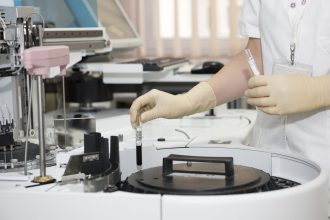
August 7, 2018
Seeking Biosimilar Market Entry When a Competitor is Pursuing Interchangeability: Factors to Consider
In addition to an abbreviated approval pathway for biosimilars, the Biologics Price Competition and Innovation Act (BPCIA) also provides a pathway for deeming a biosimilar interchangeable with the reference product. An interchangeability designation is very advantageous because, if it’s granted, the approved biosimilar “may be substituted for the reference product without the intervention of the health care provider who prescribed the reference product.” Moreover, BPCIA § 262(k)(6) also grants a period of exclusivity to the first interchangeable product.
An “interchangeable” product is a product that meets the following conditions: (1) it is “biosimilar to the reference product;” (2) it is “expected to produce the same clinical result as the reference product in any given patient;” and (3) “for a biological product that is administered more than once to an individual, the risk in terms of safety or diminished efficacy of alternating or switching between use of the biological product and the reference product is not greater than the risk of using the reference product without such alternation or switch.”
Currently, none of the FDA-approved biosimilars have been granted an interchangeability designation. Boehringer Ingelheim (BI) is the only manufacturer to publicly announce it has started a clinical study on interchangeability between its biosimilar and Humira. Given the large size of the biologics market and the benefits associated with interchangeability, it is not hard to imagine that more biosimilar manufacturers will seek interchangeability.
If a biosimilar manufacturer is considering entering a crowded biologics market and a biosimilar competitor is seeking interchangeability and/or is granted interchangeability status, the following factors may be considered:
- Entering without pursuing interchangeability: Does entering the biosimilar market without interchangeability status still make financial sense for arguably a smaller share of the market, particularly if patent litigation is possible? On the other hand, is the potential for a smaller share of the reference product’s sales enough incentive to continue pursuing biosimilar market entry without interchangeability?
- Entering and pursuing interchangeability: Are your biosimilar competitors seeking interchangeability status? If your biosimilar is the second (or later) product to achieve interchangeability status, market entry as an interchangeable product is delayed because the BPCIA grants a period of exclusivity to the first interchangeable product.
- Timing: When did or when will the biosimilar competitor with interchangeability status enter the market? For example, is there a public disclosure from a settlement agreement of a biosimilar competitor’s market entry date? If it is known, and depending on how much time until its market entry, the biosimilar manufacturer could pursue a faster (9)(C) path under the BPCIA, provide the reference product owner with a notice of commercial marketing, and launch at risk with the goal of trying to enter the market before the interchangeable product enters the market. Concurrently, the biosimilar manufacturer could be pursuing interchangeability status as well.





































